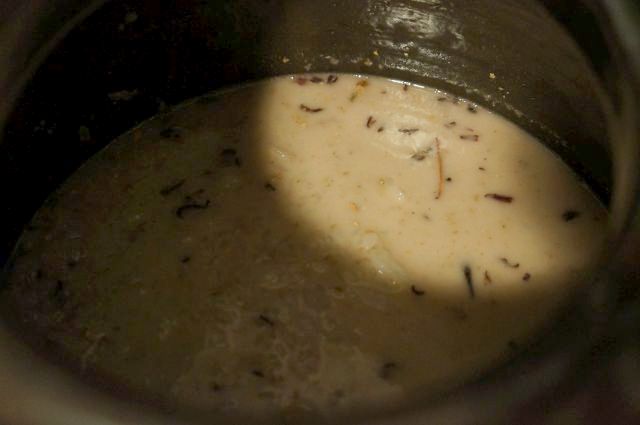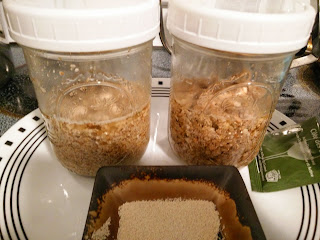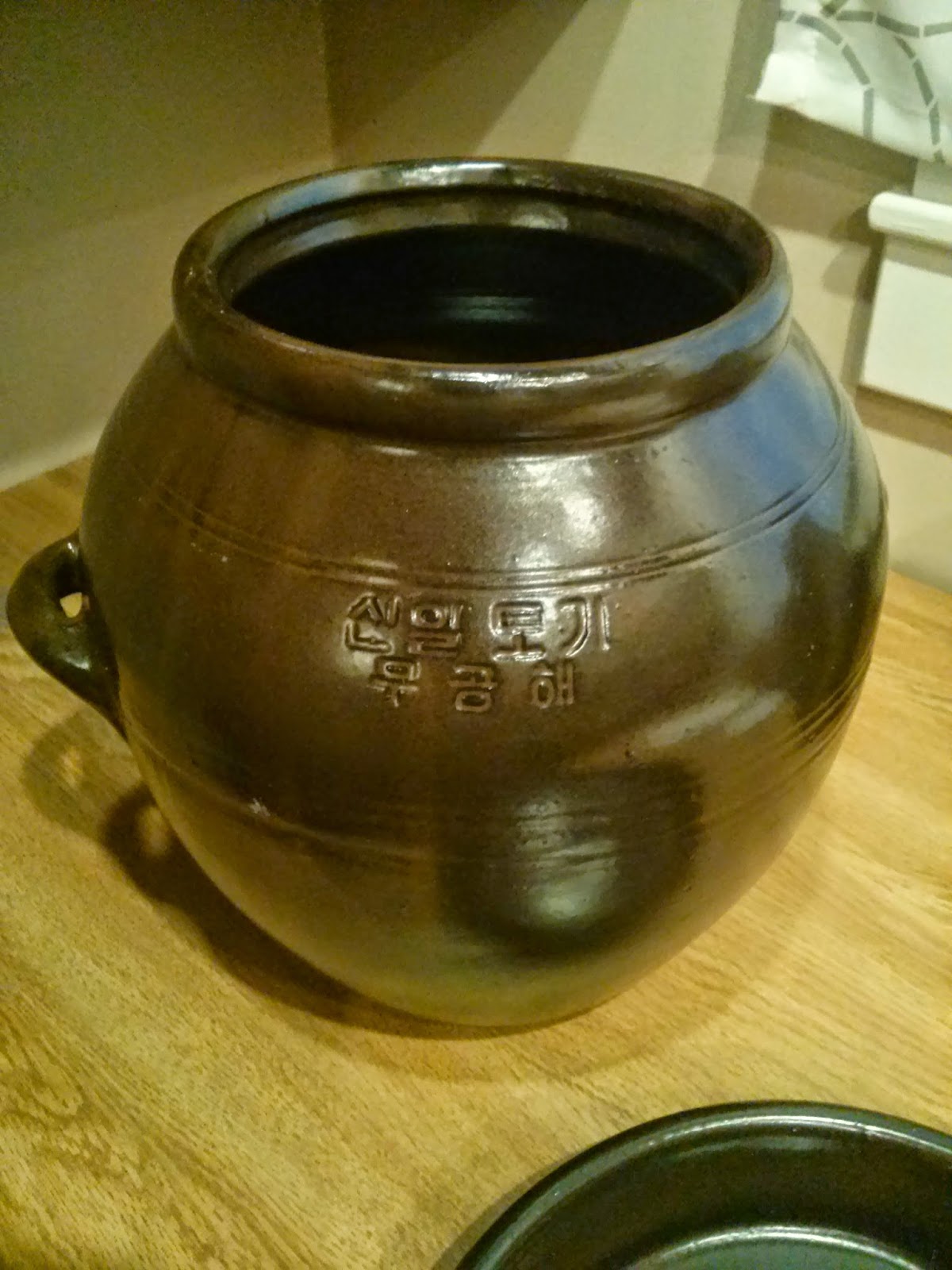Hibiscus Makgeolli
Hibiscus Makgeolli Results
We started this brew on January 21st and bottled on February 13th. Below is a progression of the fermentation, followed by bottling and tasting notes. For details on the process, see our previous post Brew Preview: Hibiscus Makgeolli.
Primary fermentation begins on 1/21. Room temperature is low, around 65 F.
Our first photo is 9 days later on 1/30. Small voids are visible on the surface where CO2 bubbles floated to the top and popped. Notice the rice grains are still largely intact.
The next snapshot is on 2/3. The rice grains are looking more soggy, but bubbles are still popping to the surface regularly. The whole brew looks thick due to the low water content of the brew.
There isn't much difference on 2/7, but the edges of the rice grains are starting to blur.
Our final snapshot before bottling on 2/13. There is a slight glimmer to the top layer from the alcohol floating to the top of the brew. Bubbling has come to a halt and only residual bubbles pop on the surface when the hangari is moved around. Looking at the rice grains, they've completely turned to mush. This will be a thick filter.
Here is our bottling setup for the Hibiscus Makgeolli. It's a small, 1 kg brew, so we don't need anything fancy. The strainer is pretty fancy, though. Check it out here: Mirro Strainer
In-process filtering. The gourd scoop makes the job easier.
The filter bag needs to be massaged to coax out the makgeolli from the jigemi. I'm wearing food prep gloves for easy cleanup; they're optional.
A close-up of the filtered Hibiscus Makgeolli. It is extremely thick.
Here is what's left after filtering: the jigemi. It is very smooth, and I can't even feel the individual rice grains. I think the rice was completely broken down, which is a good sign of an efficient fermentation. How does it taste, though?
Total yield for this brew was about 1.2 liters. Or we can say 1 liter and a cup for tasting.
The volume is low in comparison to most past brews that we've done because the water content was reduced.
Final Thoughts
I can't reiterate enough how thick this brew was. It was almost like juk in and of itself. The brew time was a bit long for a single-stage fermentation, but that can be attributed to the cold temperatures and the low water content. That was my goal for this brew, however; a thick, sweet brew with a hibiscus flavor. It did come out thick, but it is more on the dry side.
The hibiscus flavor came through, but I noticed the leaves did not expand much, and more of a medicinal or bitter hibiscus flavor was imparted on the brew. The taste may change after a couple days in the refrigerator, but this is a strong brew with a kick. The alcohol content also tastes like it is through the roof. It will be hard to determine the ABV due to the thickness of the makgeolli.
I think this will be diluted and sweetened with a little honey before serving. I'm happy with the result, but I must say, it is nothing like Jeff's Hibiscus Makgeolli. That's part of the beauty of brewing: with similar ingredients and methods, two brews of the same flavor can still come out very differently.
Cheers!
















Comments
Post a Comment